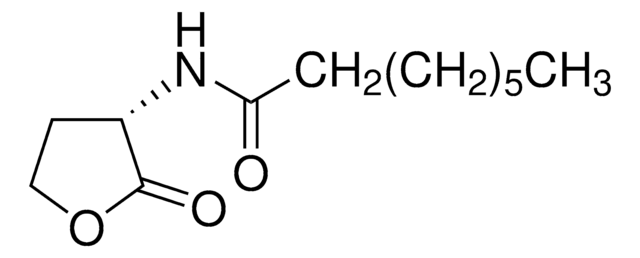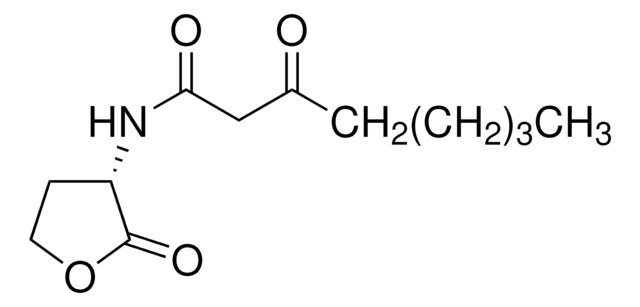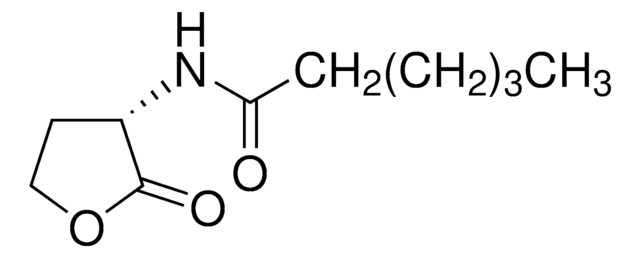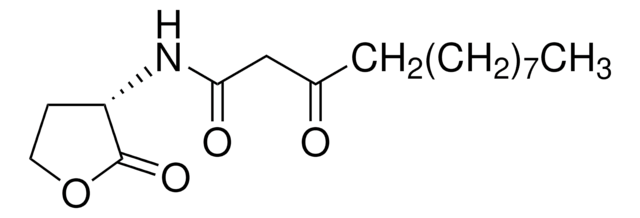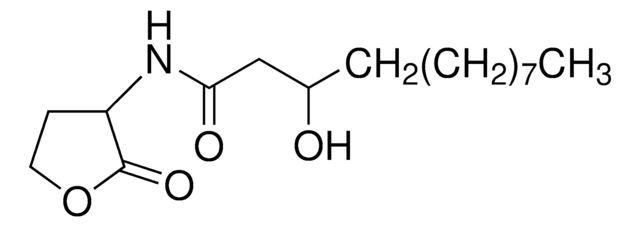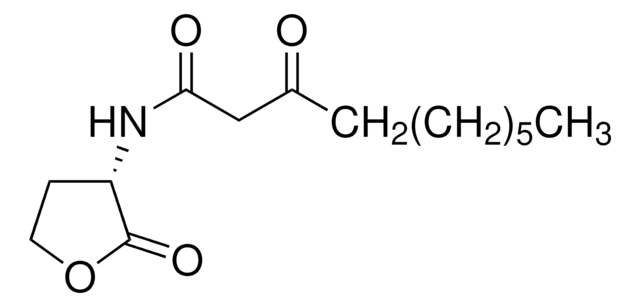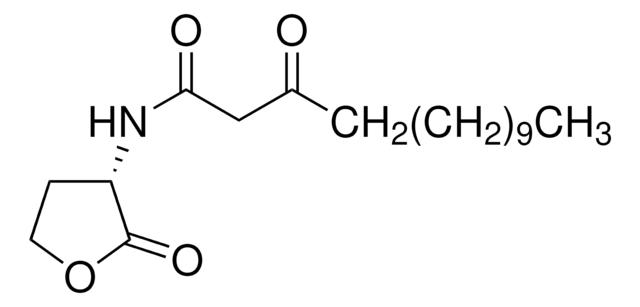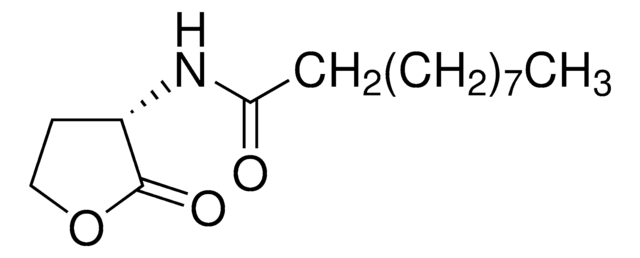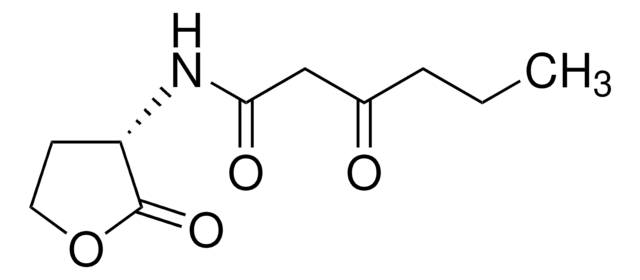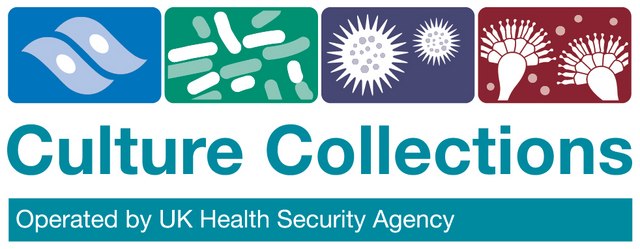68873
N-(3-Hydroxydecanoyl)-DL-homoserine lactone
Synonym(s):
3-Hydroxy-N-(tetrahydro-2-oxo-3-furanyl)decanamide, N-[(RS)-3-Hydroxydecanoyl]-DL-homoserine lactone
Sign Into View Organizational & Contract Pricing
All Photos(1)
About This Item
Empirical Formula (Hill Notation):
C14H25NO4
CAS Number:
Molecular Weight:
271.35
MDL number:
UNSPSC Code:
41116134
PubChem Substance ID:
NACRES:
NA.25
Recommended Products
form
powder
Quality Level
storage temp.
−20°C
SMILES string
O=C(CC(O)CCCCCCC)NC1C(OCC1)=O
InChI
1S/C14H25NO4/c1-2-3-4-5-6-7-11(16)10-13(17)15-12-8-9-19-14(12)18/h11-12,16H,2-10H2,1H3,(H,15,17)
InChI key
DOICJCCMIBBSOO-UHFFFAOYSA-N
Biochem/physiol Actions
N-(3-Hydroxydecanoyl)-DL-homoserine lactone is a member of N-acyl-homoserine lactone family. N-Acylhomoserine lactones (AHL) regulate gene expression in gram-negative bacteria, such as Echerichia and Salmonella, and are involved in quorum sensing, cell to cell communication among bacteria; for reviews see. Bacterial intercellular communication has become a target for the development of new anti-virulence drugs, and a research focus for the prevention of biofilm formation.
Quorum-sensing signal generation
Storage Class Code
11 - Combustible Solids
WGK
WGK 3
Flash Point(F)
Not applicable
Flash Point(C)
Not applicable
Choose from one of the most recent versions:
Already Own This Product?
Find documentation for the products that you have recently purchased in the Document Library.
David G Davies et al.
Journal of bacteriology, 191(5), 1393-1403 (2008-12-17)
It is well established that in nature, bacteria are found primarily as residents of surface-associated communities called biofilms. These structures form in a sequential process initiated by attachment of cells to a surface, followed by the formation of matrix-enmeshed microcolonies
Bonnie L Bassler
Cell, 109(4), 421-424 (2002-06-28)
In a process called quorum sensing, groups of bacteria communicate with one another to coordinate their behavior and function like a multicellular organism. A diverse array of secreted chemical signal molecules and signal detection apparatuses facilitate highly productive intra- and
Jie Zhu et al.
Current opinion in pharmacology, 13(5), 688-698 (2013-07-24)
With the emergence of microbial pathogens increasingly resistant against commonly used antibiotics, new treatment strategies are desperately needed. Bacterial quorum sensing has attracted a lot of attention over the last decade as a potential new target for antimicrobial therapy. Interference
M B Miller et al.
Annual review of microbiology, 55, 165-199 (2001-09-07)
Quorum sensing is the regulation of gene expression in response to fluctuations in cell-population density. Quorum sensing bacteria produce and release chemical signal molecules called autoinducers that increase in concentration as a function of cell density. The detection of a
Clay Fuqua et al.
Nature reviews. Molecular cell biology, 3(9), 685-695 (2002-09-05)
Bacterial cell-to-cell signalling has emerged as a new area in microbiology. Individual bacterial cells communicate with each other and co-ordinate group activities. Although a lot of detail is known about the mechanisms of a few well-characterized bacterial communication systems, other
Our team of scientists has experience in all areas of research including Life Science, Material Science, Chemical Synthesis, Chromatography, Analytical and many others.
Contact Technical Service